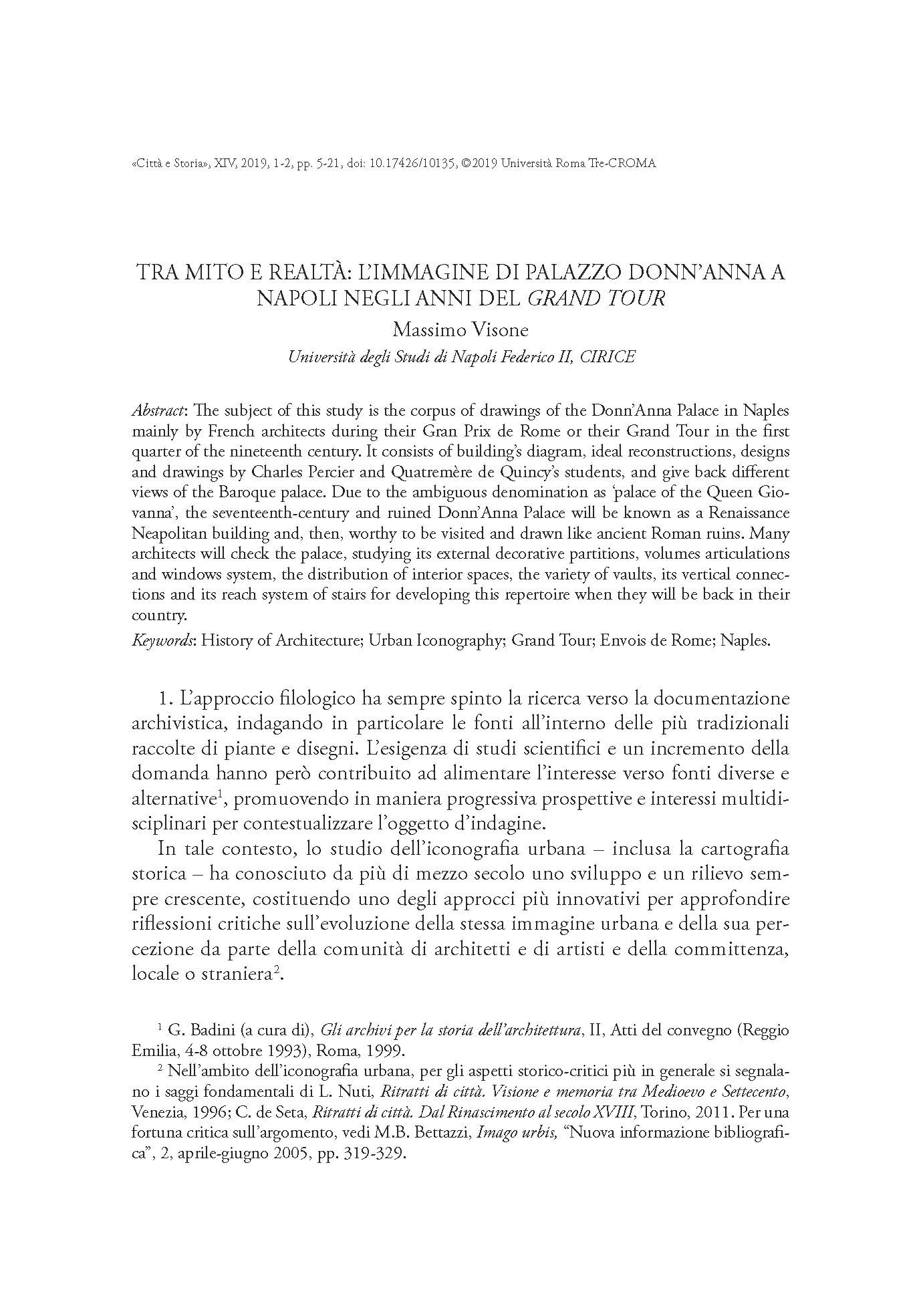Tra mito e realtà: l’immagine di palazzo Donn’Anna a Napoli negli anni del Grand Tour
6,00 €
Abstract: The subject of this study is the corpus of drawings of the Donn’Anna Palace in Naples mainly by French architects during their Gran Prix de Rome or their Grand Tour in the first quarter of the nineteenth century. It consists of building’s diagram, ideal reconstructions, designs and drawings by Charles Percier and Quatremère de Quincy’s students, and give back different views of the Baroque palace. Due to the ambiguous denomination as ‘palace of the Queen Giovanna’, the seventeenth-century and ruined Donn’Anna Palace will be known as a Renaissance Neapolitan building and, then, worthy to be visited and drawn like ancient Roman ruins. Many architects will check the palace, studying its external decorative partitions, volumes articulations and windows system, the distribution of interior spaces, the variety of vaults, its vertical connections and its reach system of stairs for developing this repertoire when they will be back in their country.
Keywords: History of Architecture; Urban Iconography; Grand Tour; Envois de Rome; Naples
Abstract: The subject of this study is the corpus of drawings of the Donn’Anna Palace in Naples mainly by French architects during their Gran Prix de Rome or their Grand Tour in the first quarter of the nineteenth century. It consists of building’s diagram, ideal reconstructions, designs and drawings by Charles Percier and Quatremère de Quincy’s students, and give back different views of the Baroque palace. Due to the ambiguous denomination as ‘palace of the Queen Giovanna’, the seventeenth-century and ruined Donn’Anna Palace will be known as a Renaissance Neapolitan building and, then, worthy to be visited and drawn like ancient Roman ruins. Many architects will check the palace, studying its external decorative partitions, volumes articulations and windows system, the distribution of interior spaces, the variety of vaults, its vertical connections and its reach system of stairs for developing this repertoire when they will be back in their country.
Keywords: History of Architecture; Urban Iconography; Grand Tour; Envois de Rome; Naples

